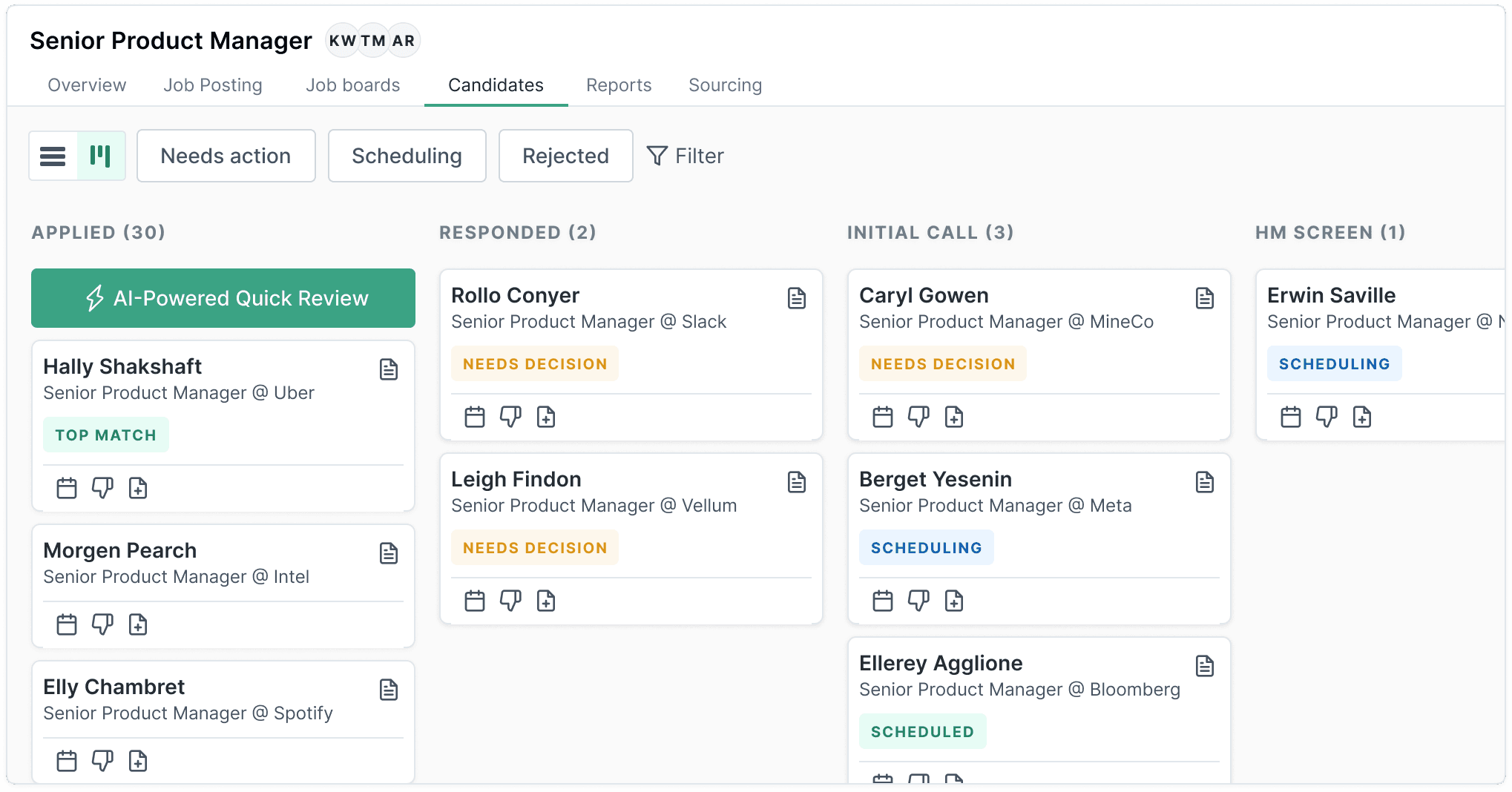If you’re a founder or work in talent acquisition for startups, you know that despite the COVID-19 pandemic and the Great Resignation, the tech industry bounced back quickly. The unemployment rate for tech jobs is 1.3%, its lowest level since June 2019 and about one-third of the national rate. As more startups open up their talent pool by adopting hybrid or remote work models, the projected growth rate for tech jobs over the next decade is near twice the national jobs rate.
If you’re a founder or work in talent acquisition for startups, you know that despite the COVID-19 pandemic and the Great Resignation, the tech industry bounced back quickly. The unemployment rate for tech jobs is 1.3%, its lowest level since June 2019 and about one-third of the national rate. As more startups open up their talent pool by adopting hybrid or remote work models, the projected growth rate for tech jobs over the next decade is near twice the national jobs rate.
To attract candidates, companies at all stages have had to offer increasingly competitive salaries, flexibility, and most importantly, extend their talent pipelines outside of traditional technology hubs to other emerging tech cities.
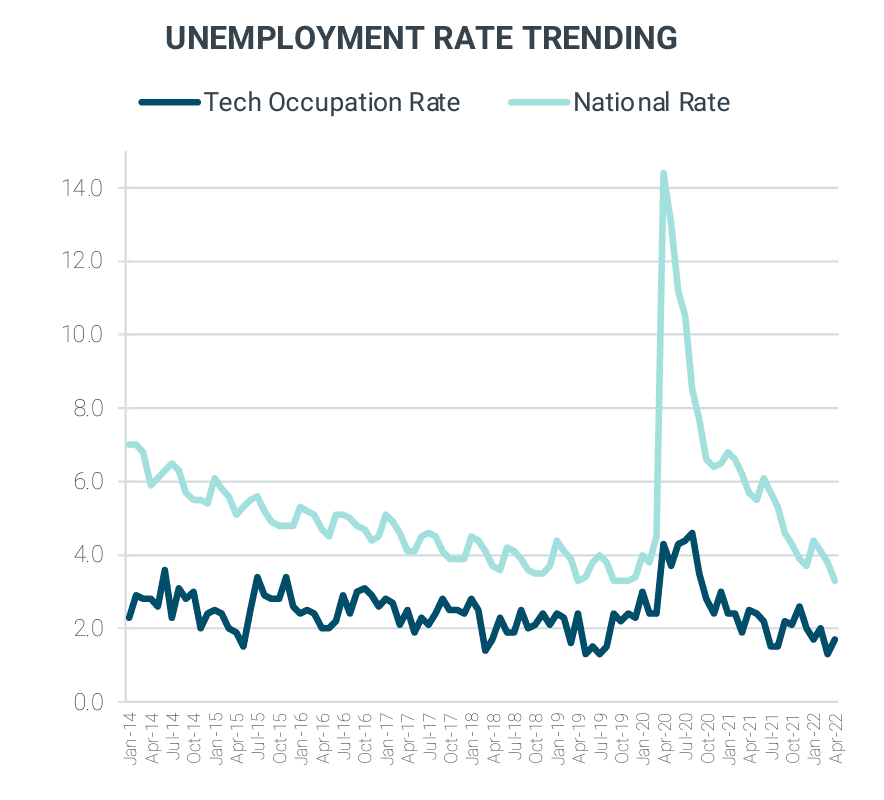
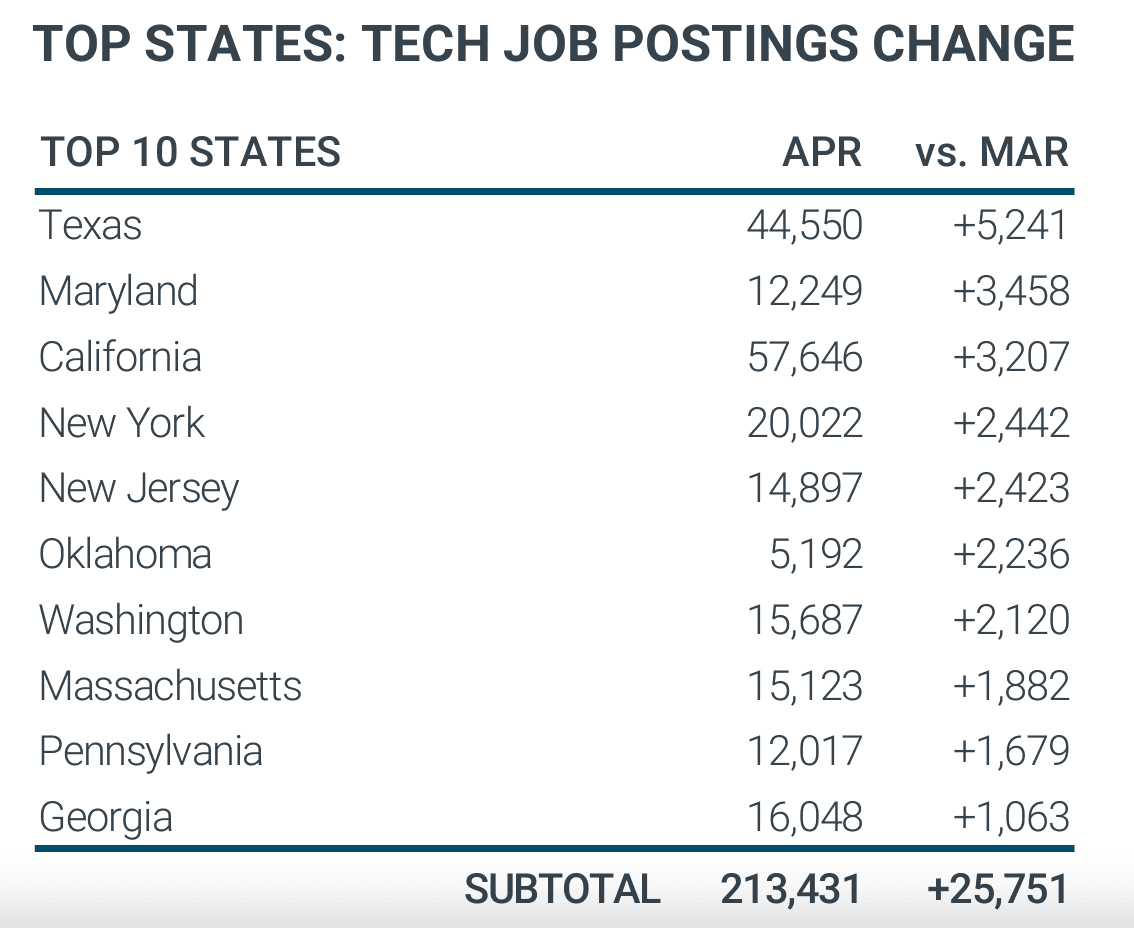
At Dover, we work with hundreds of startups to help them recruit and attract high-quality talent. As you work your way through this guide, we want to highlight three key trends that will inform your recruiting efforts as you source, screen, and close top talent this year and beyond:
The Great Resignation transitions into the Great Reshuffle.
The Great Resignation wave of 2021 continues to hit record highs — more than 4.3 million people in the U.S. voluntarily left their jobs in January. This influx doesn’t only constitute folks from poorly managed environments but has bled over into industries where the pay and benefits have never been higher, like tech. Hiring professionals are calling this The Great Reshuffle, as two-thirds of tech workers are either already seeking new jobs or are open to moving.
What to do about it: First, be a place where employees want to stay.
Employees are reevaluating their careers and are holding employers to higher standards. Add this to the challenge that many early startups have in attracting candidates, and the problem compounds. Internal mobility programs solve both the problems of retention and attraction by increasing the attractiveness of your company while saving time and resources. Employees stay almost twice as long at companies with high internal mobility than those at companies without. And those who have found new roles internally are 3.5 times more likely to be actively engaged than those who haven’t.
So, what does that look like? One option is to make a skills profile for your employees and keep track of their development. At Dover, we use people management tools like Lattice, which allows managers to gather data from their 1:1s, create individual development goals and assess their progress.
From there, you can create lateral mobility paths, where an employee takes on a whole new role in the company (e.g. a junior content marketer who wants to dive into product can become a junior product manager or content designer), or vertical mobility paths, where the employee moves higher in position (e.g. from junior to associate), with additional responsibilities.
Another option is to reimburse employees for online courses or workshops (check out Coursera or Udemy) to uplevel their skillset. Udemy even created its own internal mobility program titled MentorU, which connects employees with more experienced individuals within Udemy for mentorship and career growth.
Second: become an expert at capturing people looking for a change.
With increased competition and less time, small teams (and even recruiters) can’t manually respond to every candidate. By utilizing the multitude of automated and AI recruiting tech at your disposal, you can increase your output, streamline communications, and improve the candidate experience — setting you up to contact the right candidates when they’re ready for a change.
On Dover’s platform, we send personalized, automated outreach and only surface candidates that have responded with interest directly to you in Slack. On our backend, we ensure that anyone who doesn’t fit the bill receives a personalized rejection email. With our internal logic, we’re also able to forecast which candidates are most likely to respond and prioritize them in our outreach. This ensures that you’re only speaking to candidates you actually want to talk to who are also actively looking to make a change. We’ve saved hiring managers up to 60 to 80 hours per hire, reducing recruiting costs by a landslide.
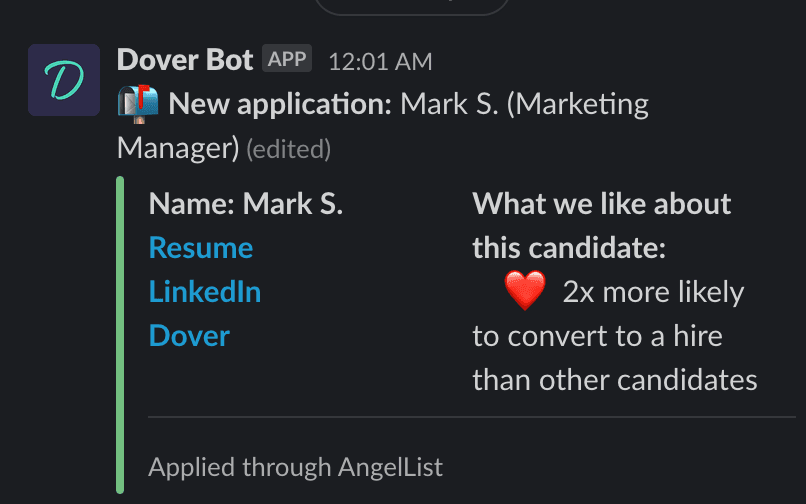
Talent is prioritizing companies with better pay transparency.
Pay transparency is becoming a top priority of candidates looking for other opportunities — in fact, job postings that list salary ranges can increase the number of applicants. On Dover’s platform, we’ve seen that employers who include salary ranges in outreach to passive talent or in job descriptions receive twice as many interested candidates. Lack of pay transparency, either through withholding the information during the interview process or not making it public to your employees, is also the number one reason candidates drop off during the screening and interview process.
As with the other strategies, this will aid in retention as well: when employers are not transparent about pay, employees are 50% more likely to leave their job in the next six months, according to a recent PayScale study.
What you should do: Consider including compensation ranges early in the candidate experience.
Several state governments have instated comprehensive laws to even the playing field. New York City recently introduced legislation that requires employers to share compensation information in their job postings, and states like Connecticut, Nevada, and Colorado have passed similar laws regarding pay transparency.
Adding compensation ranges to your outreach to passive talent, and in your job postings is the first step in creating a culture of pay transparency at your organization. You don’t need to list the details of the equity package or commission for performance-based roles until later on in the interview process, but providing a number “commensurate with experience” can prevent backlash from those who feel like they’ve been offered the lower end of the range.
Talent is more likely to reject a role due solely to a lack of perceived inclusiveness within an organization.
While in 2020 only 33% of recruiters say job seekers asked them about their DEI initiatives, today that number has jumped to 49%, meaning that DEI initiatives are becoming a top priority for talent as they assess culture fit. In fact, not making DEI one of the priorities in your hiring process can affect your ability to hire talent, as 39% of candidates reject a role due to a perceived lack of inclusiveness within an organization.
What you should do: Recommit to your employer brand…
Your employer brand, or the way you’re perceived by candidates, is an integral part of a recruitment strategy — especially when your company is just starting out. Employer branding is encompasses not only how you market your company to job seekers, but also to internal employees. The better you are at employer branding, the more likely you are to attract top talent and retain them.
The most important element you can tack on to your branding strategy to candidates when it comes to inclusion is a unique and original DEI statement that speaks to your company’s core values.
The best diversity statements include:
your company’s mission
a statement about your commitment to diversity
mention of specific underrepresented groups
positive and inclusive language (such as foster, empower, grow, celebrate)
unique information or benefits for diverse groups
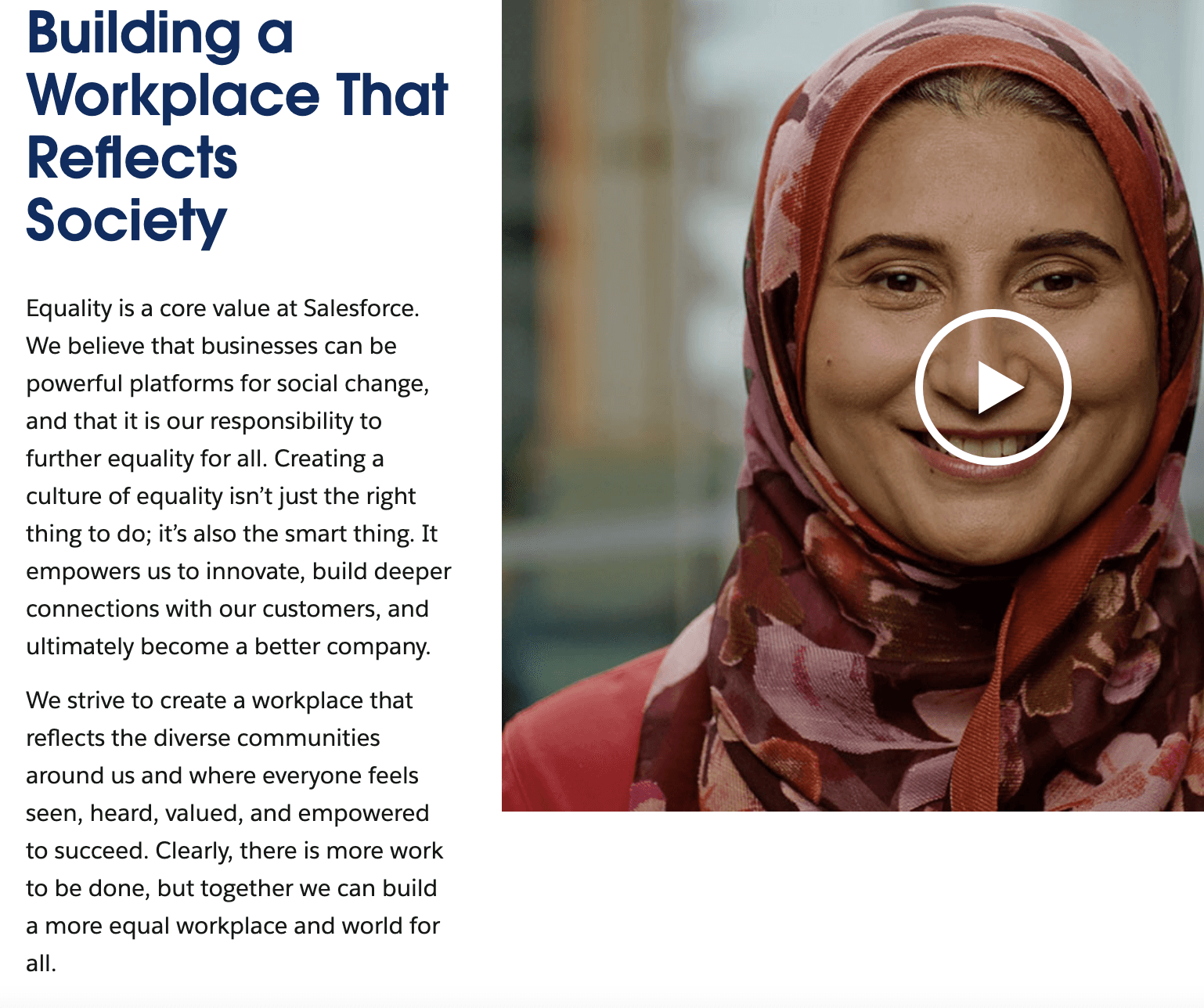
…and create a structured interview process.
Unstructured interviews can make it harder for hiring managers to fairly benchmark candidates, making it more likely that unconscious bias will creep in. Creating a structured process that tests all applicants in the same way ensures they’re all assessed against the same markers.
The simplest way to achieve this is to stick to a specific set of questions for every applicant – and remember not to diverge from them. This can help reduce subjectivity and allow candidates to be judged against others on the specific answers they give.
Want more tips on how to scale your teams in 2022 and beyond? Download our Ultimate Guide to Startup Hiring.
To attract candidates, companies at all stages have had to offer increasingly competitive salaries, flexibility, and most importantly, extend their talent pipelines outside of traditional technology hubs to other emerging tech cities.


At Dover, we work with hundreds of startups to help them recruit and attract high-quality talent. As you work your way through this guide, we want to highlight three key trends that will inform your recruiting efforts as you source, screen, and close top talent this year and beyond:
The Great Resignation transitions into the Great Reshuffle.
The Great Resignation wave of 2021 continues to hit record highs — more than 4.3 million people in the U.S. voluntarily left their jobs in January. This influx doesn’t only constitute folks from poorly managed environments but has bled over into industries where the pay and benefits have never been higher, like tech. Hiring professionals are calling this The Great Reshuffle, as two-thirds of tech workers are either already seeking new jobs or are open to moving.
What to do about it: First, be a place where employees want to stay.
Employees are reevaluating their careers and are holding employers to higher standards. Add this to the challenge that many early startups have in attracting candidates, and the problem compounds. Internal mobility programs solve both the problems of retention and attraction by increasing the attractiveness of your company while saving time and resources. Employees stay almost twice as long at companies with high internal mobility than those at companies without. And those who have found new roles internally are 3.5 times more likely to be actively engaged than those who haven’t.
So, what does that look like? One option is to make a skills profile for your employees and keep track of their development. At Dover, we use people management tools like Lattice, which allows managers to gather data from their 1:1s, create individual development goals and assess their progress.
From there, you can create lateral mobility paths, where an employee takes on a whole new role in the company (e.g. a junior content marketer who wants to dive into product can become a junior product manager or content designer), or vertical mobility paths, where the employee moves higher in position (e.g. from junior to associate), with additional responsibilities.
Another option is to reimburse employees for online courses or workshops (check out Coursera or Udemy) to uplevel their skillset. Udemy even created its own internal mobility program titled MentorU, which connects employees with more experienced individuals within Udemy for mentorship and career growth.
Second: become an expert at capturing people looking for a change.
With increased competition and less time, small teams (and even recruiters) can’t manually respond to every candidate. By utilizing the multitude of automated and AI recruiting tech at your disposal, you can increase your output, streamline communications, and improve the candidate experience — setting you up to contact the right candidates when they’re ready for a change.
On Dover’s platform, we send personalized, automated outreach and only surface candidates that have responded with interest directly to you in Slack. On our backend, we ensure that anyone who doesn’t fit the bill receives a personalized rejection email. With our internal logic, we’re also able to forecast which candidates are most likely to respond and prioritize them in our outreach. This ensures that you’re only speaking to candidates you actually want to talk to who are also actively looking to make a change. We’ve saved hiring managers up to 60 to 80 hours per hire, reducing recruiting costs by a landslide.

Talent is prioritizing companies with better pay transparency.
Pay transparency is becoming a top priority of candidates looking for other opportunities — in fact, job postings that list salary ranges can increase the number of applicants. On Dover’s platform, we’ve seen that employers who include salary ranges in outreach to passive talent or in job descriptions receive twice as many interested candidates. Lack of pay transparency, either through withholding the information during the interview process or not making it public to your employees, is also the number one reason candidates drop off during the screening and interview process.
As with the other strategies, this will aid in retention as well: when employers are not transparent about pay, employees are 50% more likely to leave their job in the next six months, according to a recent PayScale study.
What you should do: Consider including compensation ranges early in the candidate experience.
Several state governments have instated comprehensive laws to even the playing field. New York City recently introduced legislation that requires employers to share compensation information in their job postings, and states like Connecticut, Nevada, and Colorado have passed similar laws regarding pay transparency.
Adding compensation ranges to your outreach to passive talent, and in your job postings is the first step in creating a culture of pay transparency at your organization. You don’t need to list the details of the equity package or commission for performance-based roles until later on in the interview process, but providing a number “commensurate with experience” can prevent backlash from those who feel like they’ve been offered the lower end of the range.
Talent is more likely to reject a role due solely to a lack of perceived inclusiveness within an organization.
While in 2020 only 33% of recruiters say job seekers asked them about their DEI initiatives, today that number has jumped to 49%, meaning that DEI initiatives are becoming a top priority for talent as they assess culture fit. In fact, not making DEI one of the priorities in your hiring process can affect your ability to hire talent, as 39% of candidates reject a role due to a perceived lack of inclusiveness within an organization.
What you should do: Recommit to your employer brand…
Your employer brand, or the way you’re perceived by candidates, is an integral part of a recruitment strategy — especially when your company is just starting out. Employer branding is encompasses not only how you market your company to job seekers, but also to internal employees. The better you are at employer branding, the more likely you are to attract top talent and retain them.
The most important element you can tack on to your branding strategy to candidates when it comes to inclusion is a unique and original DEI statement that speaks to your company’s core values.
The best diversity statements include:
your company’s mission
a statement about your commitment to diversity
mention of specific underrepresented groups
positive and inclusive language (such as foster, empower, grow, celebrate)
unique information or benefits for diverse groups

…and create a structured interview process.
Unstructured interviews can make it harder for hiring managers to fairly benchmark candidates, making it more likely that unconscious bias will creep in. Creating a structured process that tests all applicants in the same way ensures they’re all assessed against the same markers.
The simplest way to achieve this is to stick to a specific set of questions for every applicant – and remember not to diverge from them. This can help reduce subjectivity and allow candidates to be judged against others on the specific answers they give.
Want more tips on how to scale your teams in 2022 and beyond? Download our Ultimate Guide to Startup Hiring.
To attract candidates, companies at all stages have had to offer increasingly competitive salaries, flexibility, and most importantly, extend their talent pipelines outside of traditional technology hubs to other emerging tech cities.


At Dover, we work with hundreds of startups to help them recruit and attract high-quality talent. As you work your way through this guide, we want to highlight three key trends that will inform your recruiting efforts as you source, screen, and close top talent this year and beyond:
The Great Resignation transitions into the Great Reshuffle.
The Great Resignation wave of 2021 continues to hit record highs — more than 4.3 million people in the U.S. voluntarily left their jobs in January. This influx doesn’t only constitute folks from poorly managed environments but has bled over into industries where the pay and benefits have never been higher, like tech. Hiring professionals are calling this The Great Reshuffle, as two-thirds of tech workers are either already seeking new jobs or are open to moving.
What to do about it: First, be a place where employees want to stay.
Employees are reevaluating their careers and are holding employers to higher standards. Add this to the challenge that many early startups have in attracting candidates, and the problem compounds. Internal mobility programs solve both the problems of retention and attraction by increasing the attractiveness of your company while saving time and resources. Employees stay almost twice as long at companies with high internal mobility than those at companies without. And those who have found new roles internally are 3.5 times more likely to be actively engaged than those who haven’t.
So, what does that look like? One option is to make a skills profile for your employees and keep track of their development. At Dover, we use people management tools like Lattice, which allows managers to gather data from their 1:1s, create individual development goals and assess their progress.
From there, you can create lateral mobility paths, where an employee takes on a whole new role in the company (e.g. a junior content marketer who wants to dive into product can become a junior product manager or content designer), or vertical mobility paths, where the employee moves higher in position (e.g. from junior to associate), with additional responsibilities.
Another option is to reimburse employees for online courses or workshops (check out Coursera or Udemy) to uplevel their skillset. Udemy even created its own internal mobility program titled MentorU, which connects employees with more experienced individuals within Udemy for mentorship and career growth.
Second: become an expert at capturing people looking for a change.
With increased competition and less time, small teams (and even recruiters) can’t manually respond to every candidate. By utilizing the multitude of automated and AI recruiting tech at your disposal, you can increase your output, streamline communications, and improve the candidate experience — setting you up to contact the right candidates when they’re ready for a change.
On Dover’s platform, we send personalized, automated outreach and only surface candidates that have responded with interest directly to you in Slack. On our backend, we ensure that anyone who doesn’t fit the bill receives a personalized rejection email. With our internal logic, we’re also able to forecast which candidates are most likely to respond and prioritize them in our outreach. This ensures that you’re only speaking to candidates you actually want to talk to who are also actively looking to make a change. We’ve saved hiring managers up to 60 to 80 hours per hire, reducing recruiting costs by a landslide.

Talent is prioritizing companies with better pay transparency.
Pay transparency is becoming a top priority of candidates looking for other opportunities — in fact, job postings that list salary ranges can increase the number of applicants. On Dover’s platform, we’ve seen that employers who include salary ranges in outreach to passive talent or in job descriptions receive twice as many interested candidates. Lack of pay transparency, either through withholding the information during the interview process or not making it public to your employees, is also the number one reason candidates drop off during the screening and interview process.
As with the other strategies, this will aid in retention as well: when employers are not transparent about pay, employees are 50% more likely to leave their job in the next six months, according to a recent PayScale study.
What you should do: Consider including compensation ranges early in the candidate experience.
Several state governments have instated comprehensive laws to even the playing field. New York City recently introduced legislation that requires employers to share compensation information in their job postings, and states like Connecticut, Nevada, and Colorado have passed similar laws regarding pay transparency.
Adding compensation ranges to your outreach to passive talent, and in your job postings is the first step in creating a culture of pay transparency at your organization. You don’t need to list the details of the equity package or commission for performance-based roles until later on in the interview process, but providing a number “commensurate with experience” can prevent backlash from those who feel like they’ve been offered the lower end of the range.
Talent is more likely to reject a role due solely to a lack of perceived inclusiveness within an organization.
While in 2020 only 33% of recruiters say job seekers asked them about their DEI initiatives, today that number has jumped to 49%, meaning that DEI initiatives are becoming a top priority for talent as they assess culture fit. In fact, not making DEI one of the priorities in your hiring process can affect your ability to hire talent, as 39% of candidates reject a role due to a perceived lack of inclusiveness within an organization.
What you should do: Recommit to your employer brand…
Your employer brand, or the way you’re perceived by candidates, is an integral part of a recruitment strategy — especially when your company is just starting out. Employer branding is encompasses not only how you market your company to job seekers, but also to internal employees. The better you are at employer branding, the more likely you are to attract top talent and retain them.
The most important element you can tack on to your branding strategy to candidates when it comes to inclusion is a unique and original DEI statement that speaks to your company’s core values.
The best diversity statements include:
your company’s mission
a statement about your commitment to diversity
mention of specific underrepresented groups
positive and inclusive language (such as foster, empower, grow, celebrate)
unique information or benefits for diverse groups

…and create a structured interview process.
Unstructured interviews can make it harder for hiring managers to fairly benchmark candidates, making it more likely that unconscious bias will creep in. Creating a structured process that tests all applicants in the same way ensures they’re all assessed against the same markers.
The simplest way to achieve this is to stick to a specific set of questions for every applicant – and remember not to diverge from them. This can help reduce subjectivity and allow candidates to be judged against others on the specific answers they give.
Want more tips on how to scale your teams in 2022 and beyond? Download our Ultimate Guide to Startup Hiring.



